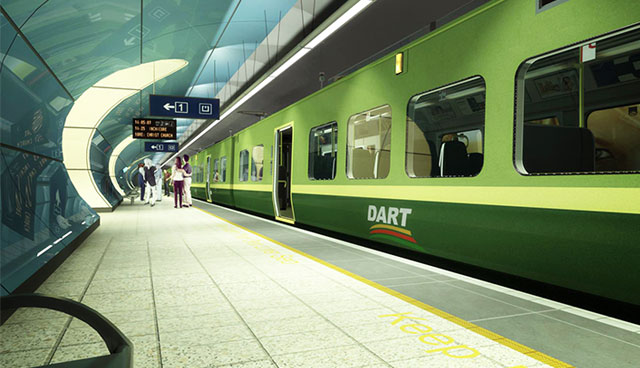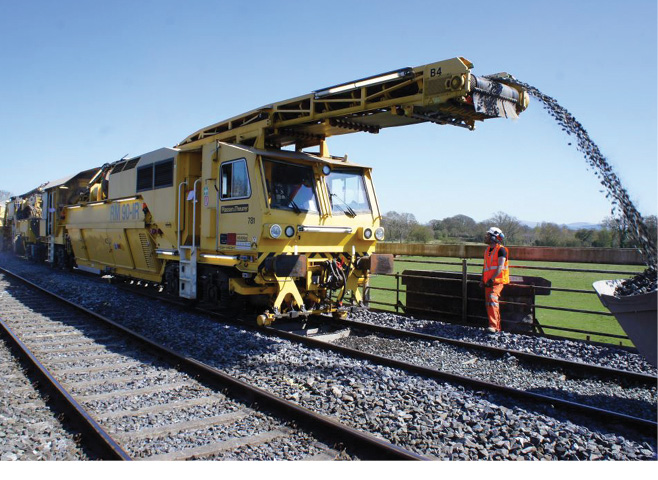On the right tracks


Infrastructure is often spoken of in cold, analytical terms: its technical design, its rate of return. However, at the heart of infrastructure – including transport infrastructure – is planning for or responding to the needs of citizens, communities, the economy and society.
At Iarnród Éireann, our infrastructure plans are developed from the priorities of our customers and communities. Our infrastructure must facilitate rail services which fulfil three requirements:
- that we operate safely;
- that we provide sufficient capacity to meet demand; and
- that we do so with competitive journey times.
These criteria drive our infrastructure priorities, both in what we have delivered, and as we work with the National Transport Authority and Department of Transport, Tourism and Sport in meeting our future infrastructure needs.
Our major infrastructure projects from the Celtic Tiger era have already ensured we have been able to cater for the growth in demand the recovering economy has generated. Projects like DART Upgrade, which allowed eight-carriage trains to operate on the DART network; and Kildare Route Project, which provided four-tracking on the approaches to Heuston, delivered significant capacity to our rail service.
New lines were delivered, with both Midleton/Cork and M3 Parkway/Docklands providing enhanced commuting options, and Galway and Limerick linked by regular services along the Western Rail Corridor.
However, now we must plan for future growth, and from a challenging position. Our network has been underfunded in recent years, with an annual infrastructure funding shortfall averaging €64 million forecast by the NTA/Iarnród Éireann Rail Review report. As we work with our stakeholders to resolve this, we welcome funding which prioritises critical safety and capacity projects, including:
- Automatic Train Protection: ATP, which exists on our DART service, is a best practice safety system which prevents trains from passing red signals and over-speeding. A major multi-annual programme will equip us with this system;
- City Centre Resignalling Project: This multi-phase project is increasing the capacity of the existing lines through the city centre, and has already facilitated the introduction of new Phoenix Park Tunnel line rail services from Newbridge/Hazelhatch to Connolly/Grand Canal Dock;
- Level crossing improvements: a new light warning system at user-operated level crossings will alert users to approaching trains. The system awaits regulatory approval and is expected to commence this year; and
- Line improvement works: 2017 marks the third year of a programme to improve the Dublin/Cork line by cleaning and replacing ballast in the track bed. This will result in improved journey times and performance.

Looking to the future, improving line speeds will be a continuing priority, with infrastructure projects targeted to bring journey time on Dublin/Cork to two hours or less, with benefits for Kerry and Limerick services also.
A new National Train Control Centre will improve train performance and service information. Continuing station improvements such as accessibility works and car park expansion will ensure all who want to use our services can do so. There will be scope also for new stations as demand and planning develops.
The capacity for development of our rail services feeding into our regional cities, where road congestion is also an issue, will be explored, as the growth in Cork Commuter and Galway/Athenry passenger numbers continues.
In the Dublin area, while we plan to introduce a 10-minute DART frequency, and Phoenix Park Tunnel services have commenced, there remains a missing link constraining the rail transport options available to the Greater Dublin area.
The DART Underground line is at the heart of the DART Expansion Programme, a series of projects which would develop and expand the DART network in the Greater Dublin Area, building on one of Ireland’s great public transport success stories, the DART.
The programme includes:
- the DART Underground line, a high-capacity second DART line running underground through the heart of Dublin city;
- electrification of the northern commuter line from the existing end of the DART network in Malahide on to Drogheda;
- electrification of the line from Heuston to Hazelhatch and completion of the four-tracking of this line between Inchicore and Park West;
- electrification of the line from Connolly to Maynooth, together with removal of level crossings and resignalling; and
- expansion of fleet and depot facilities.
This will result in a high-capacity integrated rail network across the Greater Dublin Area which will meet the transport needs of our communities and our economy, and prevent chronic congestion which would damage both.
It has the potential to treble the capacity of the rail network passing through the heart of Dublin, and connect all rail modes – DART, Commuter, Intercity, Luas and forthcoming Metro – together to from a truly integrated network, and has the capacity to allow all current peak time road commuters into Dublin to switch to public transport.
The project is currently being reviewed by Iarnród Éireann and the National Transport Authority to provide a lower-cost technical solution whilst retaining the essential rail connectivity. Design and planning is being advanced to ensure construction can commence after 2020, as pressure on our urban transport capacity accelerates.
We must continue with a consistent pursuit to develop our infrastructure in order to keep pace with best practice in managing the safety of our network. A growing challenge will be to mitigate the effects of climate change, particularly along our eastern coast which hosts some of our most scenic rail lines, but also the most exposed to coastal erosion. Elsewhere, the increase in flood levels across the State will require a national response to protect all infrastructure.
Railways are the most sustainable form of land transport, and Iarnród Éireann has reduced its energy consumption by 36 per cent since 2006, achieving and exceeding government 2020 targets already. The work to enhance our environmental advantage will continue, and electrification of the Greater Dublin Area network under the DART Expansion programme will reduce commuting emissions significantly.
Infrastructure does not exist in a vacuum – it cannot – and the National Planning Framework 2040 presents an opportunity to plan our country to maximise the sustainability and return from transport infrastructure. By targeting growth in key centres, our national rail network can ensure we have a sustainable and efficient rail network linking our major cities and towns into the future.
Our investment programmes, therefore, combine to prioritise what our customers value – safety, capacity, speed and sustainability. They will enable us to ensure that the contribution of rail transport to the transport needs of our citizens and communities is maximised, and deliver a safe, efficient, modern rail network for Ireland, for a better society and economy for all.
Iarnród Éireann
Web: www.irishrail.ie
Tel: 1850 366 222
Twitter: @irishrail






